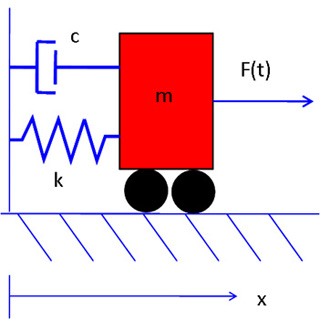Course Description
Introduction to the dynamics and vibrations of lumped-parameter models of mechanical systems. Kinematics. Force-momentum formulation for systems of particles and rigid bodies in planar motion. Work-energy concepts. Virtual displacements and virtual work. Lagrange’s equations for systems of particles and rigid …
Introduction to the dynamics and vibrations of lumped-parameter models of mechanical systems. Kinematics. Force-momentum formulation for systems of particles and rigid bodies in planar motion. Work-energy concepts. Virtual displacements and virtual work. Lagrange’s equations for systems of particles and rigid bodies in planar motion. Linearization of equations of motion. Linear stability analysis of mechanical systems. Free and forced vibration of linear multi-degree of freedom models of mechanical systems; matrix eigenvalue problems. Introduction to numerical methods and MATLAB® to solve dynamics and vibrations problems.
Course Info
Learning Resource Types
assignment
Problem Sets
grading
Exams
notes
Lecture Notes

A moving cart attached to a wall by a spring and a dashpot. The equations of motion for every 1-degree-of-freedom system can be linearized around the equilibrium points to the second order differential equation that describes this system. Thus, understanding the free response and selected forced responses for this system can give deep insight into the stability of the equilibrium points and the behavior of a large number of systems. See Lectures 20 and 21 for more information. (Image by MIT OCW.)










